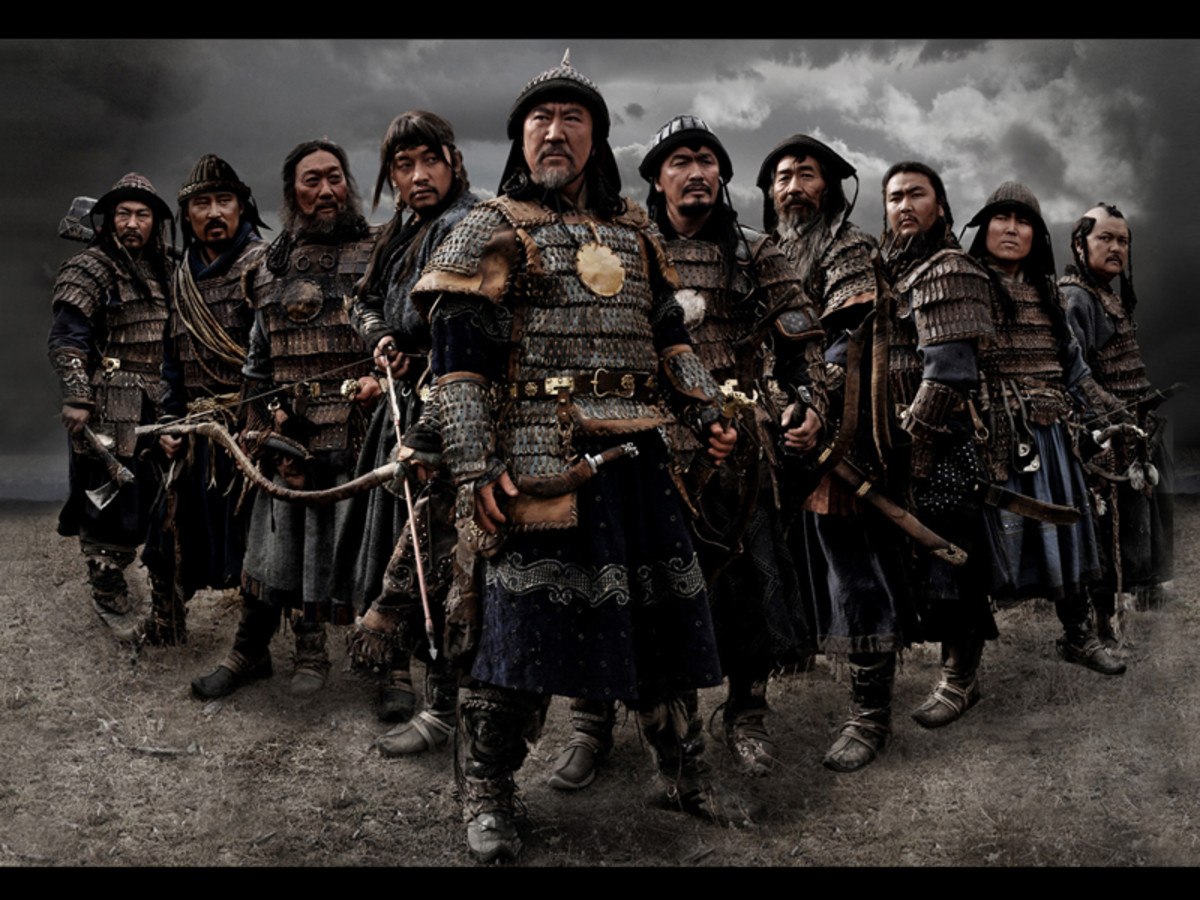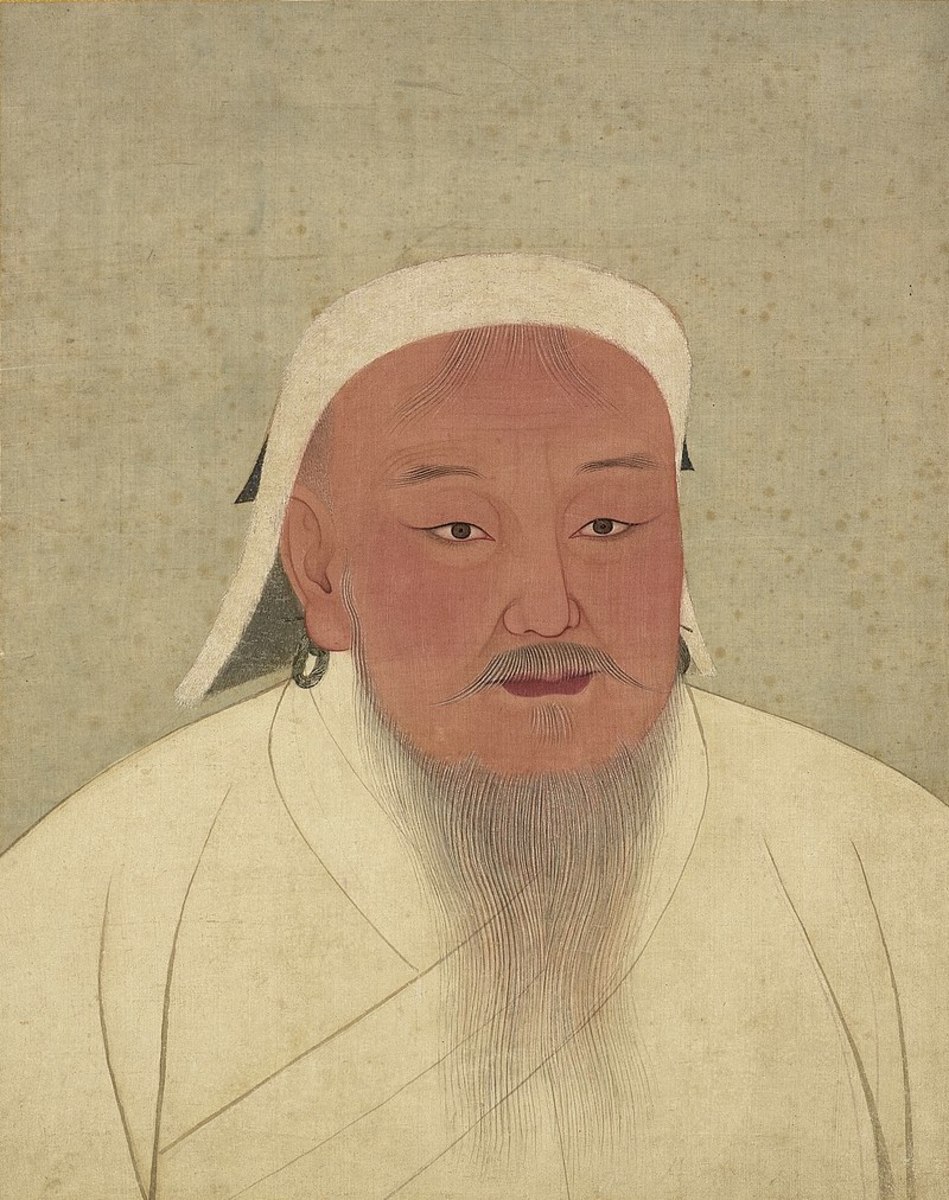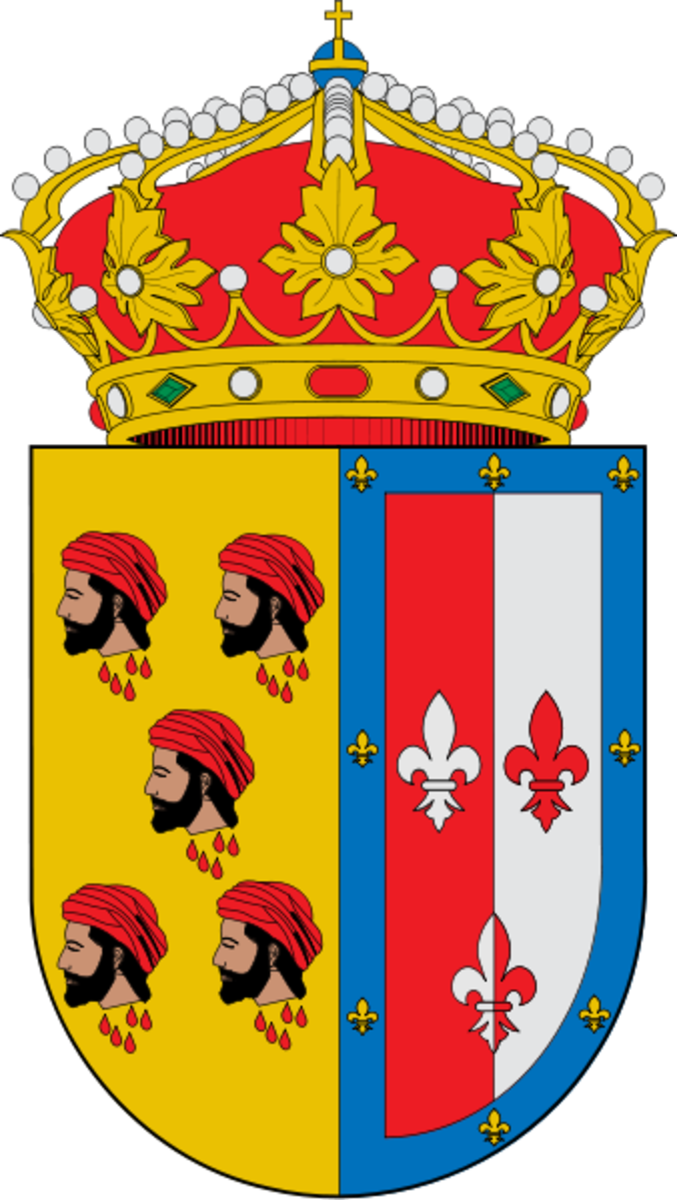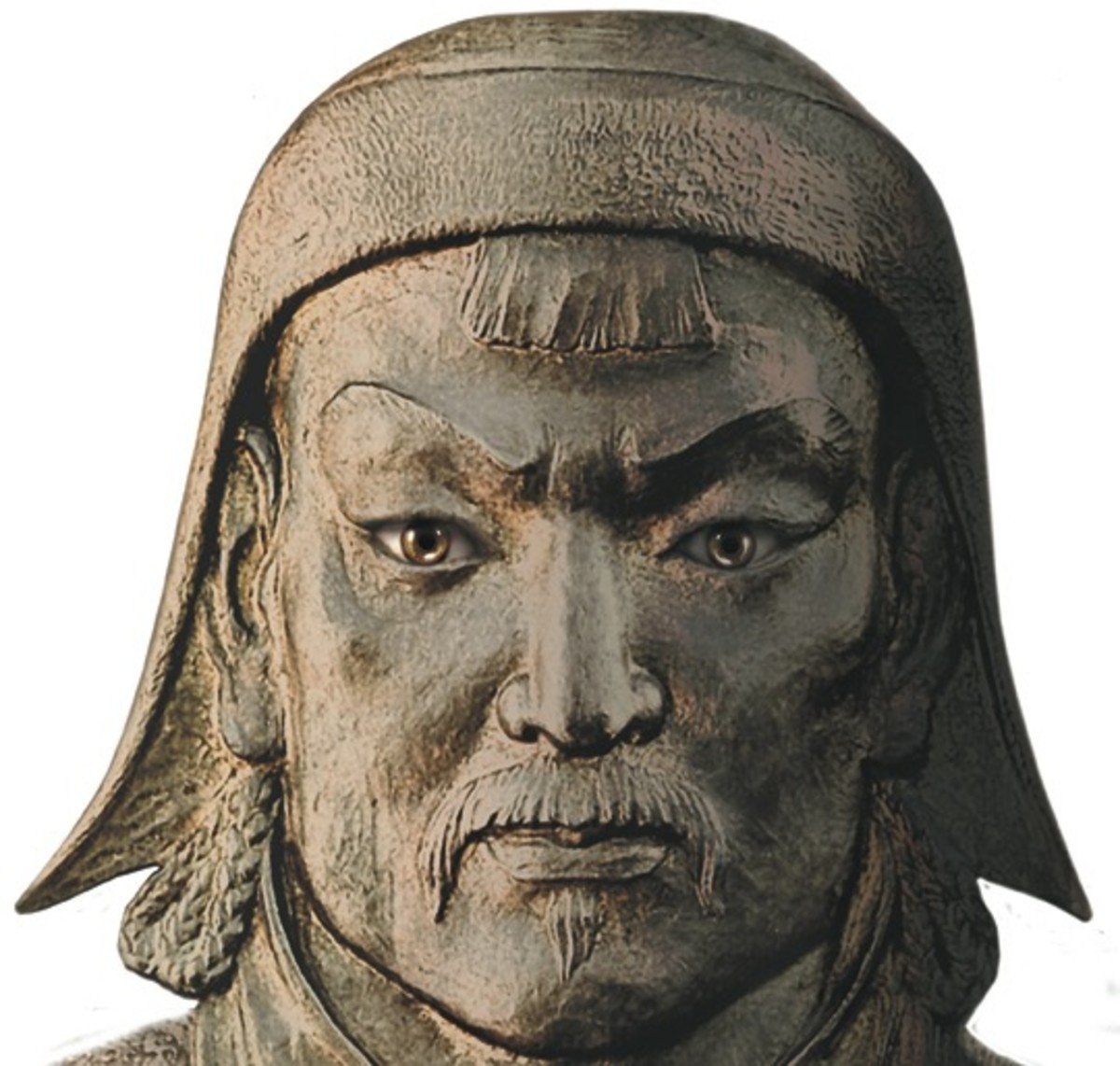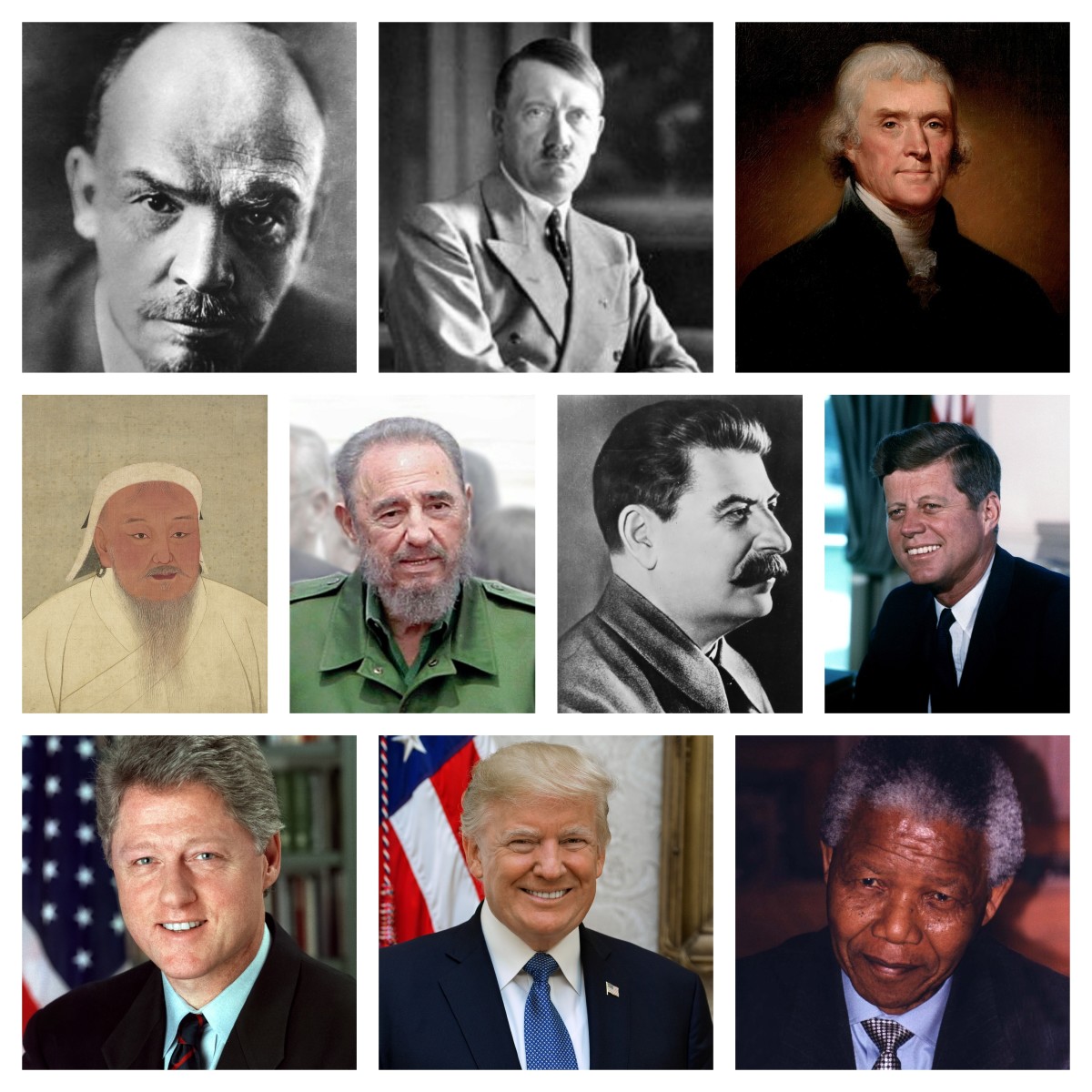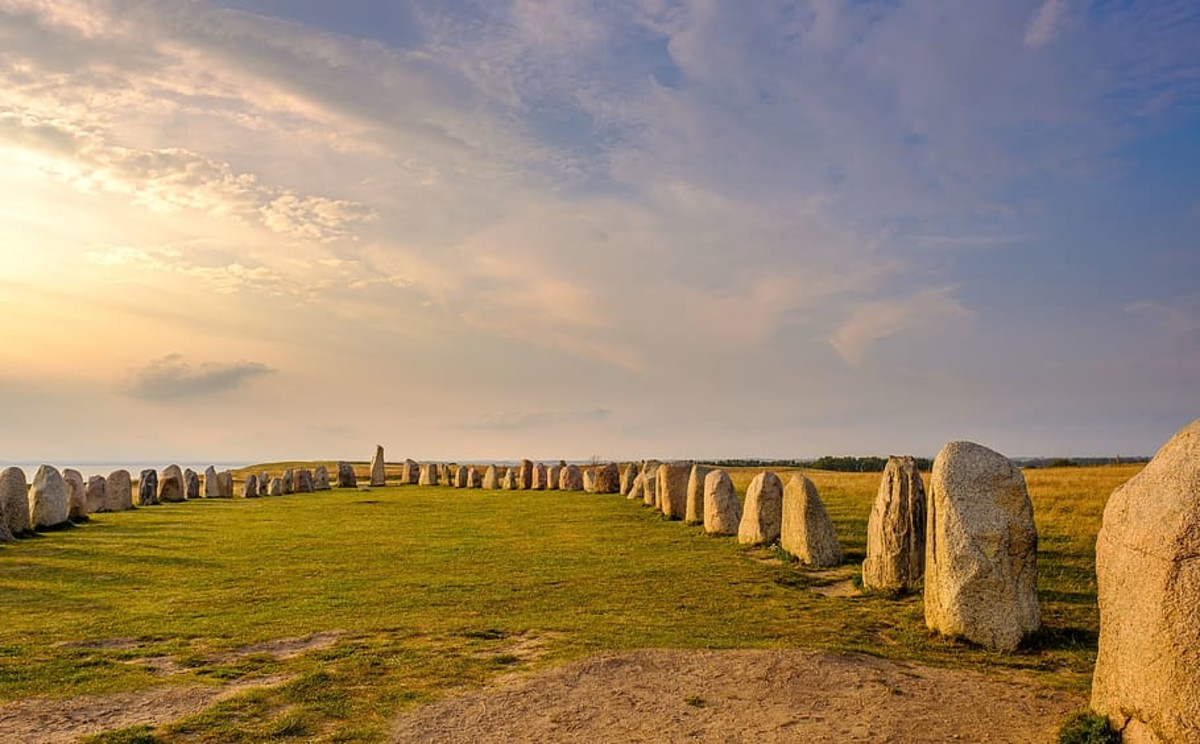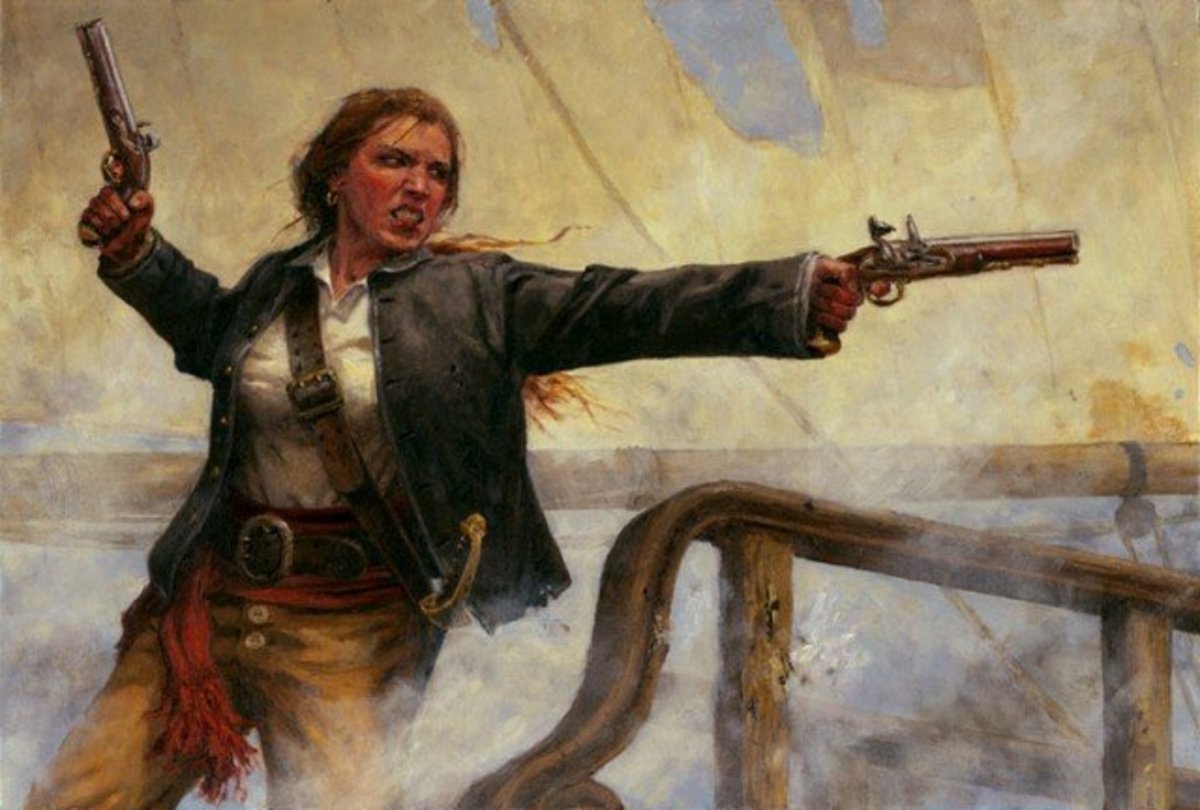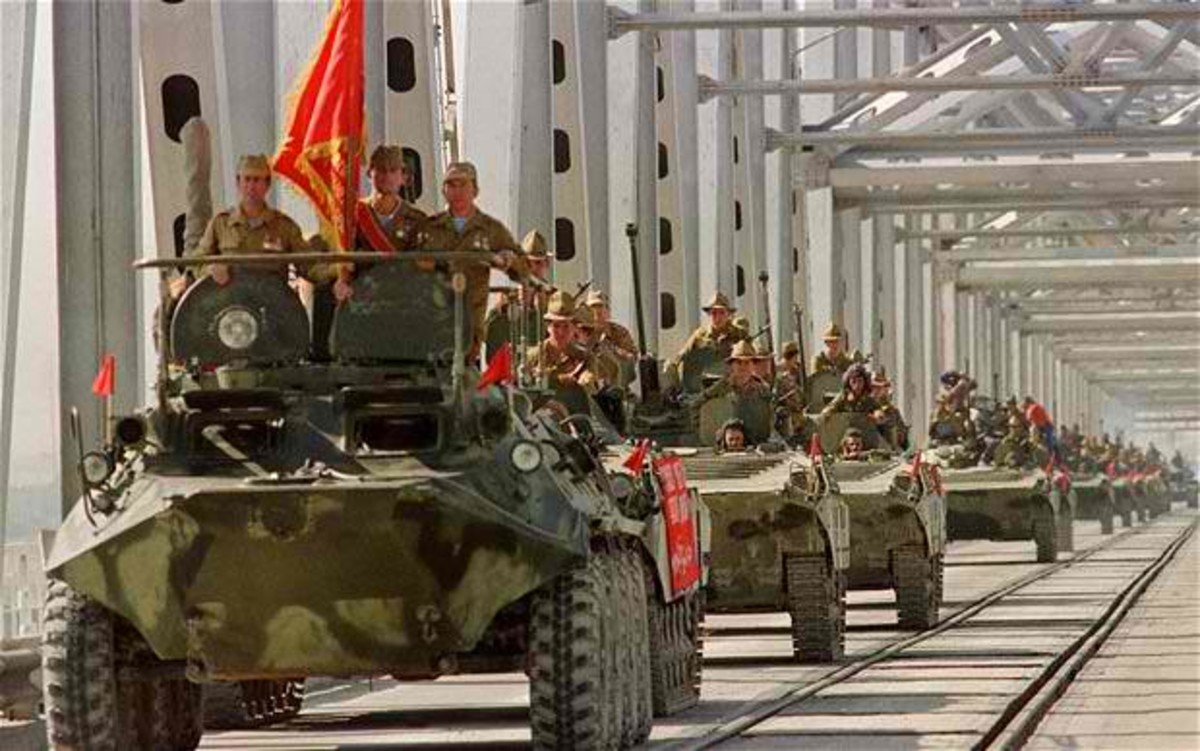The Mongol Empire
Fascinating Fact
At the height of their power, the Mongols controlled roughly 22 per cent of the Earth's land mass.
Summed Up In A Quote
'They are inhuman...more like monsters than men.'
Matthew Paris, 13th century chronicler, on the Mongols.
Background
Almost extinct in the modern world, the nomadic pastoralist lifestyle was a rather unusual one and those people who lived it developed an extraordinary set of skills. Time after time, in both ancient and medieval history, these aptitudes had translated seamlessly from the open steppes of Central Asia to the field of war. Superlative horsemanship; skills with the bow and arrow and other weapons. The Mongol people were equipped with all of these, as well as possessing unimaginable endurance and toughness. For generations though, they only went to war with each other- tribe vs. tribe; the only exception being whenever an enterprising warlord fostered a larger warband for an assault on a settled community reasonably close at hand. Thus it was from these small beginnings that Genghis Khan and his sons created the biggest land empire ever seen, ranging all the way from the Pacific Ocean to Central Europe.
A Crash Course On The Mongols
The Great Khan
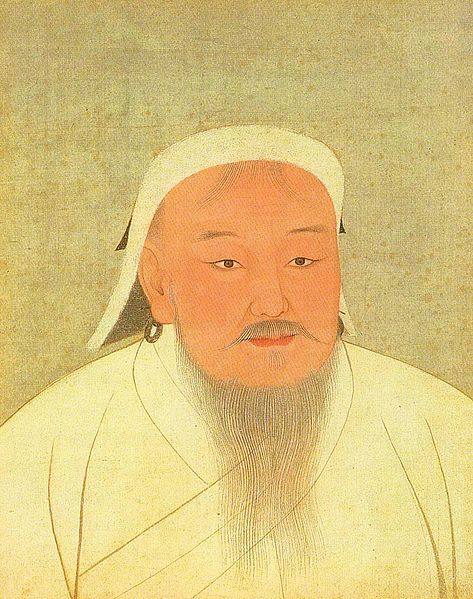
Order From Chaos
In their scattered, ever mobile tribal communities, the Mongols were not the most promising material for nation building. Certainly, many of the tribal leaders resented Genghis Khan’s rise to prominence. But, by coaxing some and forcing others, through promises and administering a little pressure from time to time, Genghis Khan slowly fashioned the Mongols into a coherent people. By 1206, when he was about 40 years old, Genghis Khan could at last claim to be the Khagan, or ’Great Khan’, the undisputed leader of the Mongols.
This freewheeling warrior of the steppe had already shown himself a cunning and calculating politician. Now he revealed his infallible instincts as a politician and administrator. He broke up the old hierarchies in Mongol society, marginalising the traditional elite. Instead he gave leadership positions to his most trusted friends, or to promising fighters plucked from the ranks. Having humbled the powerful, he won the gratitude of more vulnerable groups by outlawing the sale of wives and by excusing the poorest people from paying taxes. Genghis Khan divided his warriors up into groups of ten, a hundred, 1000 and 10,000, taking extra care to cut across tribal lines of loyalty. By doing that he introduced a degree of regimentation to the anarchic warfare of the steppe. While he had no wish to tame his fighters’ ferocity, he took careful steps to control it; acts of rape and plunder performed without his permission were strictly barred.
A Full Length Documentary On The Mongols
Archers On Horseback
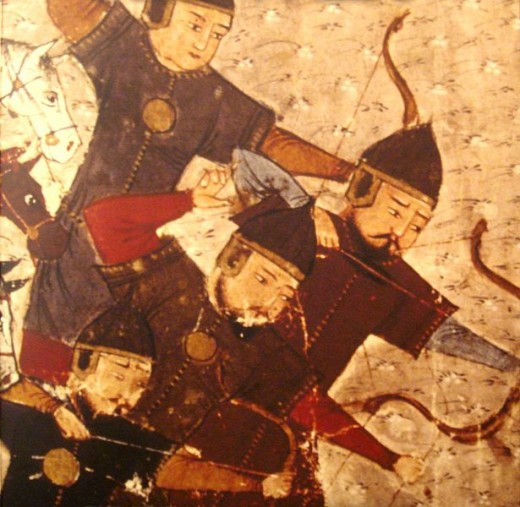
At A Gallop
Genghis Khan hardly needed to train his men in archery and close quarters fighting, however, he ensured that they practised daily to hone their skills. Manoeuvres on horseback were an essential part of herding and hunting life, but there was always scope to iron out imperfections. Rigid regimentation might have been alien to his approach, but discipline was not. Time and time again, his horsemen caught out enemy forces where they appeared to break formation and flee in disorder, prompting mad and fanatical pursuit, only to regroup at a moment’s notice, wheel round and descend upon their helpless enemy. (Western European cavalry forces were to adopt this trick in the centuries that followed.) Many of his warriors were to fight as armoured lancers; in fact, Genghis Khan himself developed particular mounted manoeuvres for these men, drilling them tirelessly, until they became second nature.
Mongol soldiers usually travelled light, with most only wearing layers of seasoned leather, sewn onto a fabric support, by way of armour, although the lancers’ would be stiffened with plates of iron or bone. Agility in the saddle kept the soldiers safe for the most part; their diminutive horses possessed extraordinary stamina and speed; easily covering vast distances in a relatively short space of time. So much so, that settled peoples who received news of Mongol attacks some distance away frequently underestimated just how quickly the brutal invaders would arrive.
More On Genghis Khan
Three Highly Recommended Books

Successor To The Great Khan
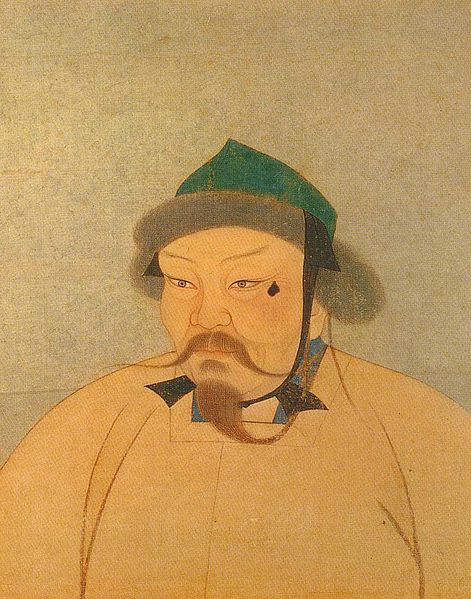
When Europe Nearly Fell To The Mongols
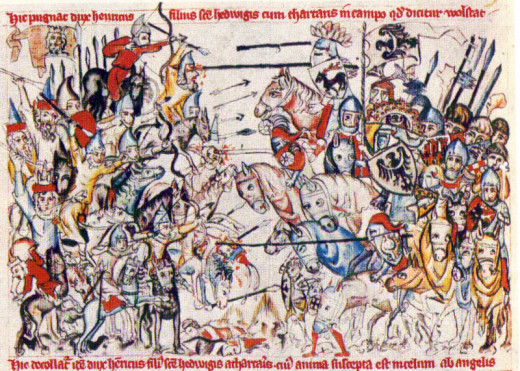
A Narrow Escape
The Mongol army swept like a storm through East Asia, invading Xi Xia, the kingdom in north-western China, in 1207. The Mongols sacked Zhandu, now known as Beijing in 1215, before heading south into the heartland of the ‘Middle Kingdom’. Then, they proceeded westwards to strike the cities that lay on the Central Asian Silk Road, and by 1222 they were making a diversion into northern India. The following year they ventured into the southern Russian steppe. By the time their enigmatic leader died in 1227, the empire of the Mongols stretched from the Pacific Ocean in the east to the Caspian Sea in the west, and Khan’s successors quickly proceeded to menace the Arab countries of the Middle East. The pace of the Mongols’ progress was dizzying, yet their military prowess depended on a great deal more than speed. Genghis Khan had never stopped learning, and never stopped trying to improve his fighting force. Wherever he went, along with the usual plunder, he also captured talent, including weapons-makers, armourers and, above all, engineers. This most nomadic of armies had become supreme in the most static form of warfare; the Mongols were renowned for their skill in siege-craft.
They could fill the deepest moats at speed with sandbags; their giant catapults (feats of engineering that could conveniently be taken apart for transporting on horseback, only to be reassembled quickly when needed) could hurl anything from flaming naphtha to putrid animal carcasses over the highest battlements; and they had engines that could shoot dozens of fire arrows at a time. They also had another weapon, perhaps the most important of all; sheer terror. When Samarkand in Uzbekistan fell after a siege in 1220, the Mongol leader had the inhabitants rounded up and led to a plain outside the city walls. The hapless people were then slaughtered and their skulls arranged into a pyramid, which acted both as a sign of victory and a warning to those who might have been tempted to resist.
The conquests continued under Genghis Khan’s son, Ogedei. His forces invaded Russia in 1237, leaving a trail of destruction wherever they went. In 1240 Mongol troops sacked the city of Kiev after a gruesome siege. Ogedei’s armies continued westwards, with separate warbands making exploratory forays into Poland and Hungary. On the 9th April 1241, at Liegnitz, in Poland, a small subsidiary unit led by the Mongol general, Subedei, smashed the Silesian army of Duke Henry II. Just two days later, Subedei’s main military force defeated the Hungarians at Mohl; the gateway to Western Europe, with all its riches, now lay wide open.
The Mongol juggernaut was halted though, by the death of Ogedei Khan, meaning that all of the Mongol chiefs were called back for a conclave to elect his successor. By the time his successor Gyuyuk Khan was in place, the Mongols were preoccupied with other campaigns in the eastern regions of their realm. Much the same happened later, in 1259, when Hulegu Khan’s armies were ravaging the Middle East en route to Egypt; the region was only reprieved by the death of his brother, Mongke Khan. Not, however, before Baghdad had been taken, Hulegu’s Mongols literally outdoing themselves in wanton cruelty. Anything up to half a million people may have been slaughtered in the bloodletting that followed the Iraqi city’s fall, as the world’s most beautiful metropolis was razed to the ground.
The Fall of Baghdad
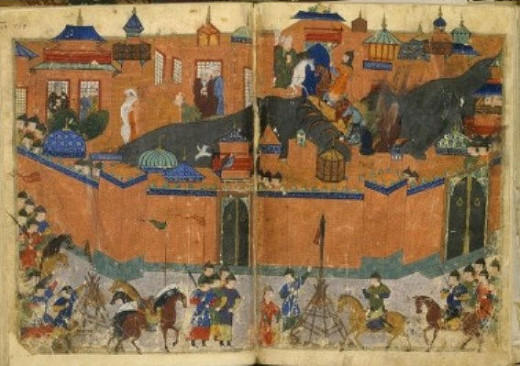
The Wars Of Kublai Khan- Background
Conquering China posed both military and cultural challenges for the Mongols. Yet Kublai Khan was able to make himself a new kind of Mongol ruler, different from his predecessors. But for all his innovativeness he remained just as warlike, attacking not only China, but also neighbouring states, from Burma to Korea and even attempting an invasion of Japan twice.
The Mongols however, were not the first people to make nomadic incursions into China. The Central Asian Hsiung Nu for example, made periodic incursions into the ‘Middle Kingdom’ in ancient times. Next came the Khitan, the Tanguts, and, in the 12th century, the Jurchen’s Jin empire occupied the north.
The advent of the Jin empire forced the ruling Chinese Song dynasty to move its capital from northerly Kaifeng to Li’nan (present day Hangzhou). The armies of this ’Southern Song’ managed to successfully repel the Jurchen raiders, resulting in the establishment of a rather uneasy equilibrium.
Genghis Khan of course, had begun his grand Empire building campaign in China, but it was the northern region that had borne the brunt. Now it was the turn of his grandson Kublai Khan to lead the fearsome Mongol hordes southwards to try to establish some sort of permanent Mongol presence.
Another Khan
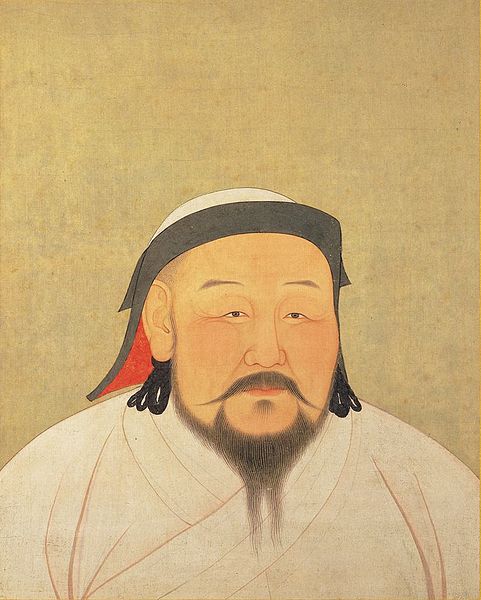
A Highly Recommended Book

The New Conqueror
Kublai Khan had come into contact with Chinese culture as a young man, while working as governor of the Mongols’ southern territories. The Jin empire and Xi Xia were regions of China under nomad rule. The young Kublai was an ardent admirer of Chinese civilisation and covetous of Chinese wealth and technology, and so was keen to add the ‘Middle Kingdom’ to the Mongol empire. He had been fighting against the Southern Song in China when he received news of his brother Mongke’s death in 1259, and he faced a bitter struggle for succession with his younger brother, Ariq Boke. It was not until 1264 that Kublai Khan was able to return to his long term plans. But his courage and determination to carve out a new Chinese empire for himself may well have been bolstered by this period of feuding.
While Kublai Khan had emerged the victor, he had a lost a degree of support in the Mongol heartlands and an oppositional faction had grown up around his nephew Kaidu. By 1271 he had committed himself so far to the project that he declared himself Huangdi or ’emperor’ and the founder of a new Chinese ’Yuan’ dynasty.
This new title though, meant little, in that he did not control the majority of the areas to which he was laying claim, but it would have been full of significance for the Han Chinese. By approaching it, Kublai Khan was sending out a powerful signal that he came, not merely as a conqueror, but as a new emperor. He underlined this by establishing his capital on Chinese soil, in Daidu (Beijing). How deep his self-reinvention as a Chinese ruler ran is difficult to know, as many of his later reforms may be interpreted as attempts to recast traditional Chinese society along Mongol lines.
More On Kublai Khan
The Key Weapon
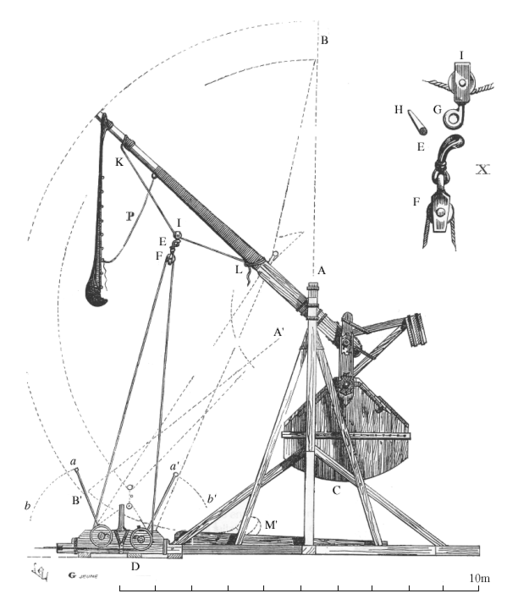
Stalemate At Xiangyang
Kublai Khan did not object to waging war on his adoptive country. He began by besieging Xiangyang in 1268, a strategically vital city as it controlled access to the Han River and hence to the Yangtze, and to the fertile plains of central China. Kublai Khan attacked with 100,000 mounted warriors; additionally he was equipped with trebuchets, massive catapults that could fling rocks across the river into the city. However, the Song defenders had widened the river at the vital point and padded their walls so that the missiles were rendered harmless. Kublai Khan responded by building a fleet of ships to blockade the river. But the Song were able to hold out almost indefinitely. In the end, they held out for six years. The breakthrough came with the advent of counter-weighted trebuchets, designed specifically for Kublai Khan. These new catapults could send missiles weighing over 600Ibs a distance of over 1500 feet.
Fascinating Fact
It's said that Kublai Khan constructed 5000 ships to prevent river-borne supplies from reaching the Song at Xiangyang.
New Departures
Xiangyang had been the Song dynasty’s strongest fortress; once it fell, nothing stood in the way of the Mongols from streaming through the heart of China. By 1276 most of China was in Mongol hands. The Song’s last stand came at the naval battle of Yamen in March 1279. Though outnumbered, the Yuan ships succeeded in enclosing the Song fleet in a narrow bay. The confined ships were tied together in a line so when the Yuan attacked, they were afforded a floating walkway to the central Song flagship.
Kublai Khan’s success in conquering China was extraordinary. He contrived a miracle of organisation and logistic support and sustained it for the best part of ten years, managing it over an area stretching for thousands of miles. Moreover, the area could hardly been less suited to the traditional tactics of the Mongols.
The Way Of The Samurai
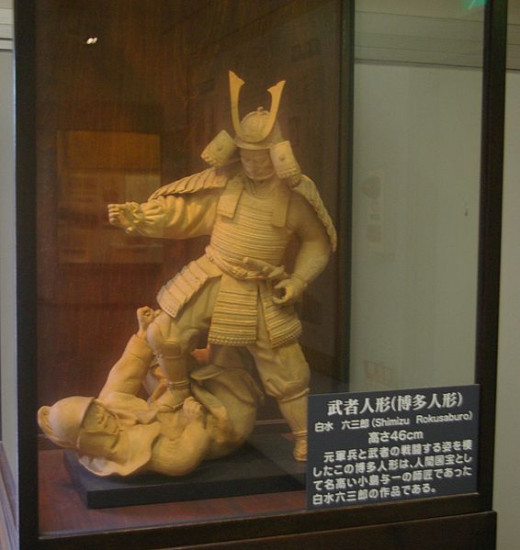
Ill Prepared Ventures
Subsequent invasions were rather less successful. In 1274 a seaborne assault of Japan at Hakata Bay or Kyushu was thwarted when a storm destroyed the Mongol fleet. Kublai Khan sent a second invasion fleet in 1281. Again, tradition has it, that a typhoon dispersed the attackers ships. Modern experts though, have suggested that both fleets were too hastily built and inadequately prepared. Some even question whether the ’divine winds’ were anything more than the usual bad weather.
An invasion of Burma in 1277 fared much better. The country was quickly conquered and reduced to client status. But successive attacks on Vietnam were thwarted. In Korea, however, Kublai Khan used more guile, and lent discreet support to King Wonjong against his rivals in exchange for gaining Korea’s loyalty as a vassal state.
One Famous Dynasty For Another
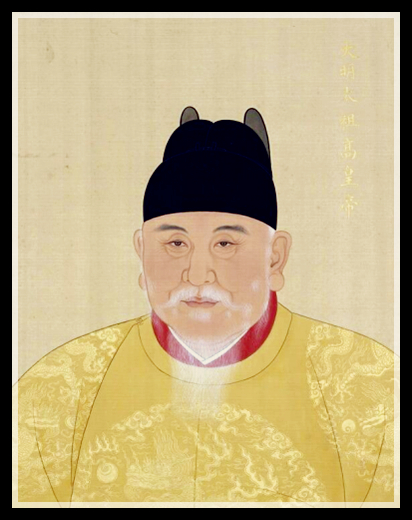
An Empire In Decline
Kublai Khan showed open-mindedness in his military innovations, and his reforms placed the empire on a stronger footing, encouraging economic innovation and increasing social harmony with the help he gave to the poor. He died in 1294 and was followed by his grandson, Temur, but his succession was as troublesome as Kublai Khan’s been. Later Yuan emperors failed to reign successfully over such a vast empire.
A series of droughts and floods in the 1340’s brought the agrarian economy to its knees. The government’s inability to cope created anger and unrest. The Red Turban Rebellion broke out in the 1350’s. Led by Zhu Yuangzhang, these Han Chinese rebels brought down the Yuan dynasty in 1368. Zhu Yuangzhang went on to found the famous Ming dynasty.
In Korea, meanwhile, the kings of Koryo, who of course, were puppets of the Mongol Empire, were overthrown in a military coup in 1392 by General Yi Seongyi; his Choson dynasty was to remain in power until the last years of the 19th century.
The Conquests Of Timur Lenk- Background
At first glance, all was quiet on the Central Asian steppe by the 14th century, but warlords still jostled for the advantage, setting their sights on greater things. Each of these warlords were fully aware of the Genghis Khan story. The tale of a warlord who had emerged from nowhere in the 13th century to establish the biggest land empire the world had ever seen. To the more ambitious among them, his story offered an alluring vision of what ruthlessness and courage might achieve.
Transoxania, in present day Uzbekistan, now belonged to the Khanate of Chagatai, so named for one of Genghis Khan’s sons. The territory was still ruled by his successors, the Barlas, a Turkic-Mongolian group who prided themselves on their illustrious line of descent, though there is thought by some to be little merit to their claims.
A New Wave Of Terror
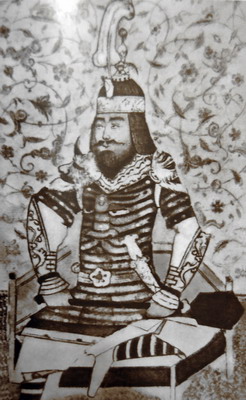
Timur's Empire
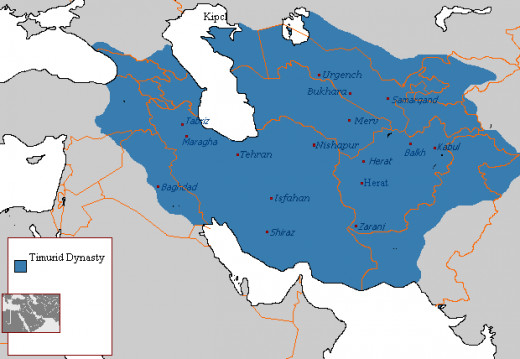
Fascinating Fact
All in all the campaigns initiated by Timur Lenk claimed the lives of 17 million people, which at the time was roughly 5 per cent of the world's population.
'Genghis Khan'- The Second Coming
Timur Lenk or Tamerlane to give him his birth name, began his rise in the best steppe tradition, as a raider and livestock rustler. By his early 20s, he headed a warband of 300 strong. His flair for fighting was already evident, as were his rigour and courage. Like his idol, Genghis Khan, however, he was a politician too. Deftly playing off the enmities and ambitions of men much more powerful than himself, Timur had made himself leader of the Barlas clan by 1360; eight years later he was leader of the Chagatai Confederation. No one was in any doubt where the real power lay. Making Samarkand his headquarters, he vowed to transform it into one of the world’s greatest cities.
But before he could do so, Timur had to make himself the master of the steppe; his campaigns of the 1370’s took him east into the Altai region and north into the Golden Horde. Only when Central Asia had been secured did he direct his energies south and west. He began in 1381 by invading Iran, a land of small states once united under the Mongol Ilkhanids. First the city of Herat fell, followed quickly by many others, with few, if any offering the invaders any serious resistance.
More On Timur Lenk/Tamerlane
Fascinating Fact
In 1388 a chronicler counted 28 pyramids, each one comprising of 1500 skulls in a half circuit of the walls of Isfahan, Iran, after Timur Lenk's sacking.
Strategy Of Atrocity
Only afterwards, when Timur had left did the region rise in rebellion. It was at this point that Timur’s true nature displayed itself nakedly. Without hesitation he turned back and put down the revolt in a manner that can only be described as frenzied. At Sabzevar he had 2000 living prisoners heaped with mud and masonry, literally building them into the fabric of the tower. Yet there was method in his madness; he was using atrocity as an instrument of strategy. Wherever he went, he built pyramids of skulls, as a warning to the world and a monument to his murderousness.
Pushing west through Azerbaijan into Christian Georgia, he forced the king to convert to Islam before heading south through Armenia and back into Iran. In 1387 he took Isfahan, but then rebels killed Timur’s tax collectors. Again, he proved implacable in his anger.
Timur Takes On The Christians
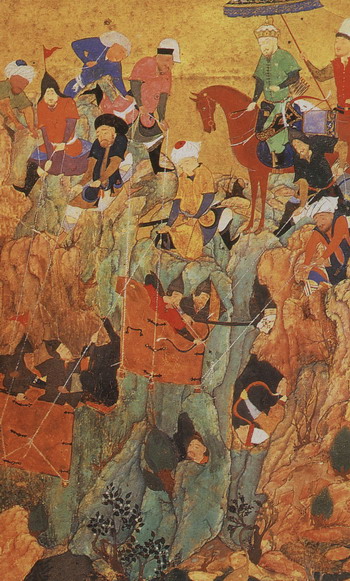
Into India
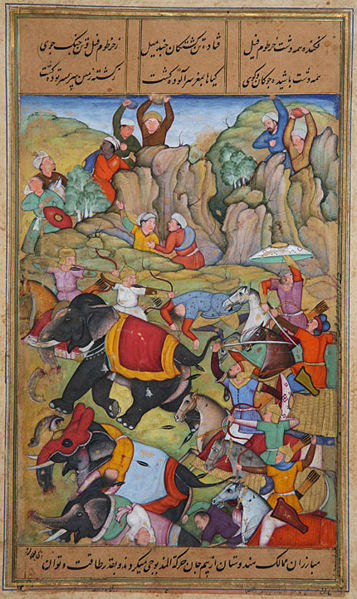
Capturing A Sultan
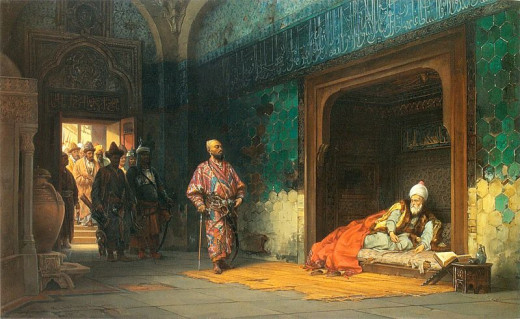
Perpetual Motion
Timur was always a nomad at heart, a raider rather than an empire builder. He governed by fear, mounting punitive patrols at any sign of trouble. By 1393 he was back in Iran, crushing a rebellion with his customary cruelty. Attacks on Baghdad and Kurdistan were followed by raids on the Golden Horde, sacking and burning as he went. The impression that forms in ones mind is of a leader eaten up by an insane blood lust; but Timur was more rational than that. The sacking of southern Russia cut off one of the main commercial corridors between East and West. Trade now had to pass through his own territories further to the south.
Whatever horror he induced in the civilian populations of the countries he conquered, Timur inspired nothing but adulation and undying loyalty in his men. As his conquests continued, his army grew in size till it eventually numbered 200,000 men. A master tactician, he love ruses and feints; his troops would pretend to flee then suddenly regroup and attack.
Timur was a Muslim and frequently professed to be fighting for his faith, even if many thousands of his victims were Muslims too. In 1398 he led his army over the mountains of the Hindu Kush. From the Punjab to Delhi, they sacked every city they passed and laid waste to the land. It’s said that they killed as many as 100,000 civilians before they even reached the capital.
The Ottoman Turks also fell short of Timur’s Islamic standards. In 1402 he marched against Sultan Bayezid I of Ankara. Bayezid’s defeat gave Timur a dubious role as the saviour of the Eastern Roman Empire, otherwise known as the Byzantine Empire. By 1404 Timur had achieved all he had set out to do. The Middle East was his; his sumptuous tomb stood pride of place in his capital, Samarkand. He was laid to rest in it the following year.
A Fitting Memorial
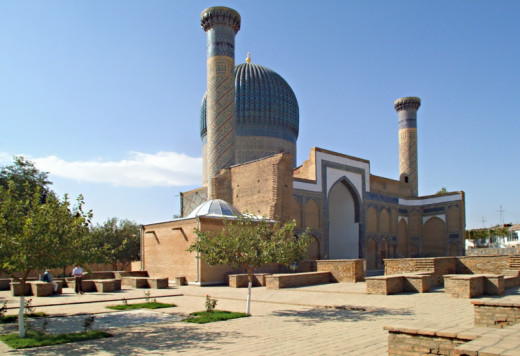
Two Useful Links
- The Mughal Empire In India
A hub that I wrote about one of Timur's descendants, Babur who laid the foundations of the Mughal Empire which ruled India until the British came along in the 18th century. - The Fall of the Roman Empire...in 1453
A hub that I wrote about the fall of Constantinople, which occurred fifty years after Timur Lenk's death.
Timur's Legacy
To the great relief of his subject nations, Timur Lenk turned out to be an anomaly. His Timurid dynasty collapsed completely within a century, largely through his successors proving to be inept rulers and focusing more on infighting rather than the overall glory of the dynasty. There was however, one refugee from the Timurid dynasty’s power struggle; the Muslim conqueror Babur. In the early 16th century he invaded India and founded the Mughal Empire
In the meantime, the Ottoman Turks managed to recover from their defeat at the battle of Ankara to reassert their hold on Anatolia, capturing Constantinople in 1453 and destroying the last remnants of the Roman Empire. After that, they were able to expand their widening empire into Europe.


![Nomad [Explicit]](https://m.media-amazon.com/images/I/61Eyy5f1Y2L._SL160_.jpg)


